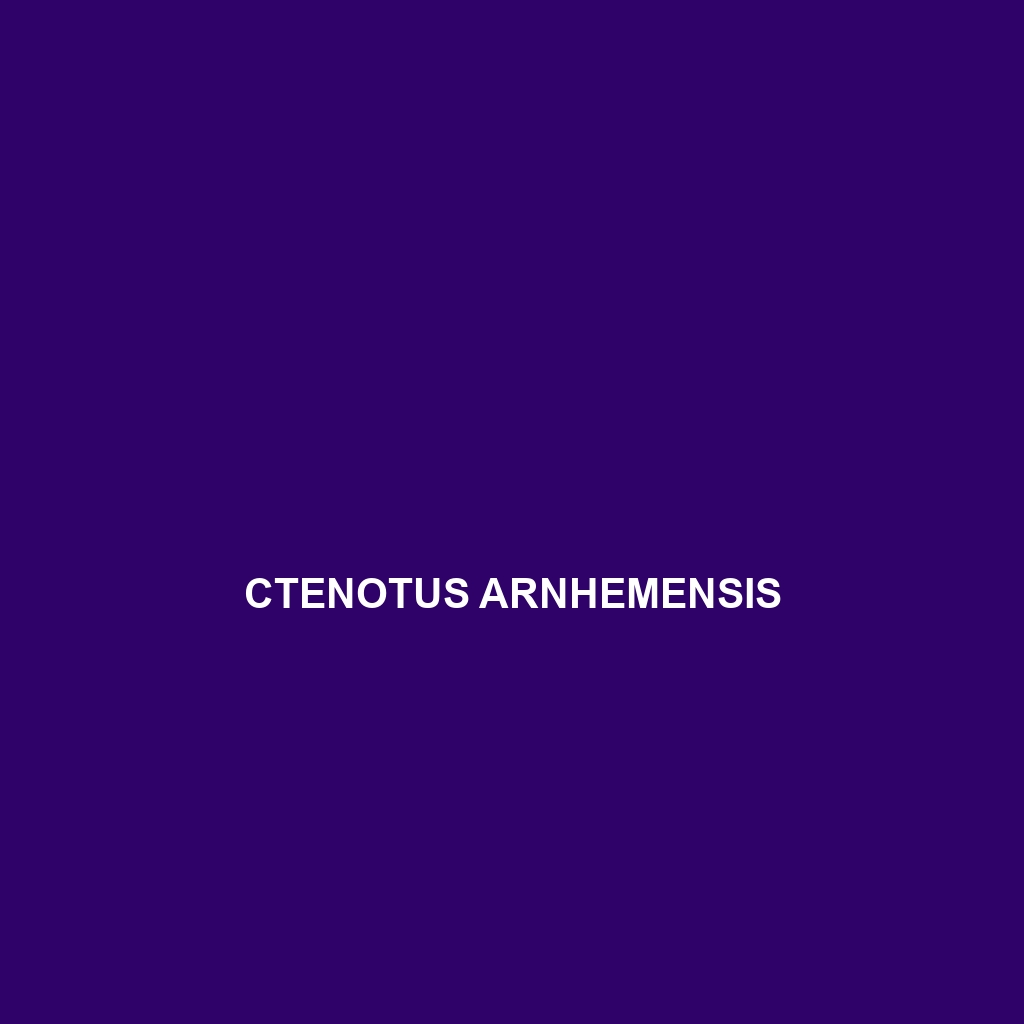Species Description: Ctenotus arnhemensis
Common Name: Ctenotus arnhemensis
Scientific Name: Ctenotus arnhemensis
Habitat
Ctenotus arnhemensis is primarily found in the northern regions of Australia, specifically in the Arnhem Land area of the Northern Territory. This species inhabits various habitats including open woodlands, grasslands, and rocky outcrops, where it can often be seen basking in the sun. The local climate is typically tropical, characterized by a wet season and a dry season, making these habitats vital for the survival of Ctenotus arnhemensis.
Physical Characteristics
Ctenotus arnhemensis typically reaches lengths of about 15 to 25 centimeters. They exhibit a smooth, elongated body with a slender tail, which is often a distinguishing feature. The coloration of this lizard is predominantly brown to gray, patterned with lighter or darker stripes along their bodies, providing effective camouflage against the soil and rocks. Their smooth scales and distinctive dorsal patterns are of particular interest to herpetologists and lizard enthusiasts alike.
Behavior
This species is diurnal, which means that Ctenotus arnhemensis is most active during the day. They are often seen foraging for food or basking in sunlight. Their agile movements and ability to quickly dart into crevices provide a defense mechanism against predators. Social interactions among individuals can also be observed during the breeding season, highlighting their complex behavior.
Diet
Ctenotus arnhemensis is primarily an insectivore, feeding on a variety of small insects such as ants, beetles, and grasshoppers. This diet plays a crucial role in controlling insect populations within their habitat. Their feeding habits are vital not only for their survival but also for maintaining the ecological balance of their environment.
Reproduction
Breeding typically occurs during the warmer months, generally from September to November. Ctenotus arnhemensis is oviparous, laying clutches of 2 to 6 eggs. The incubation period lasts approximately 8 to 12 weeks, during which the eggs develop in sandy or loamy soil. Upon hatching, juvenile Ctenotus arnhemensis are independent and exhibit similar physical characteristics to adults.
Conservation Status
According to the IUCN Red List, Ctenotus arnhemensis is currently classified as Least Concern but faces potential habitat threats due to land development and climate change. Conservation efforts are essential to ensure this species remains stable within its natural habitat.
Interesting Facts
Ctenotus arnhemensis is known for its remarkable ability to change color slightly in response to temperature or environmental changes. This adaptability makes it a fascinating subject for scientific study and highlights its resilience in varying conditions.
Role in Ecosystem
Ctenotus arnhemensis plays an important role as both a predator and prey within its ecosystem. As an insectivore, it helps in controlling insect populations, contributing to the ecological balance. Additionally, it serves as a food source for various predators, making it an integral part of the food web in its native habitat.
